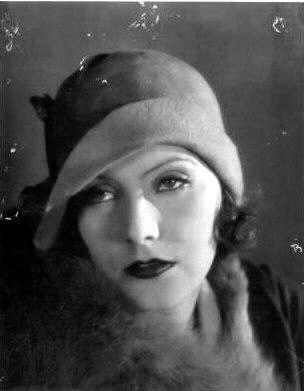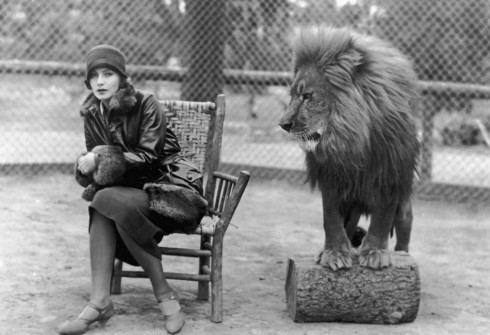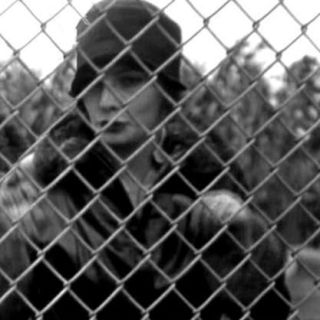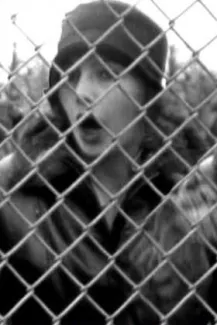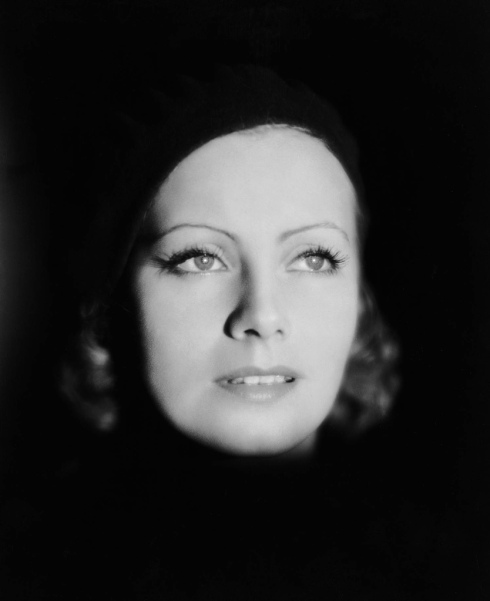
Greta Garbo in Anna Christie by Robert De Niro, Sr.
Robert De Niro premiered a new documentary at Sundance film festival this weekend. The half-hour doc was produced by HBO and is about the Oscar-winning actor’s father, the late artist Robert De Niro, at Sun. What’s interesting about “Remembering the Artist Robert De Niro, Sr.,” is how it sheds light on the mutual fascination father and son had for another star: Greta Garbo. De Niro, Sr.’s fascination for the movie star was such that he would bring his young son to all her movies – and De Niro, Jr. became fascinated in his own right with her. While his father would paint portraits of Garbo, his son would study Garbo’s acting technique which inspired him to become an actor himself. Who knew?
Greta Garbo was the undisputed Queen of Golden Age Hollywood, or more accurately, Tinseltown from her 1927 silent film debut up to her abrupt departure from the screen in 1941. So much has been written about Garbo that there is very little new light to be shed on the luminous screen creation that was Garbo. The one thing I can add to all the biographies and hagiographies of the iconic actress, however, is why she remains more relevant today than when she was the highest paid woman in the U.S. ($5,000 a week in 1932) and the most recognizable face on the planet. Garbo remains relevant to today’s celebrity-obsessed culture simply because she started it all. She was the first star whose private life became fodder for the tabloids, literally her every move became a matter of record in every newspaper throughout the world.
The list of firsts involving the screen queen goes on and on:
The first time in history a newspaper hired a plane to fly over a celebrity’s house to capture a “candid” photo of the star sun-bathing nude.
The first time a King visited a movie set to pay homage to a movie queen (King Gustav of Sweden to MGM in Hollywood). Of course, Garbo refused to meet him.
The first time a celebrity (since Cleopatra) went by one name.
Garbo. Historians of film still talk about “the Rapture” seeing her face in close-up on screen had on theater audiences, both male and female, throughout the world. Never before had a human visage been captured in light so perfectly and so large – big enough to see every perfect pore of skin (covered in silver make-up made for her by Max Factor himself – so she would literally shine), every eyelash (all natural); ever internal thought conveyed through voluminous eyes.
Garbo, aka “The Face” was said to be the most beautiful woman who ever lived. But more than that, Garbo brought about modern screen acting, making her counterparts Norma Shearer and Marion Davies by comparison, appear to be pantomiming. Screen legend Bette Davis was so obsessed with Garbo’s acting that she stole onto a movie set to see Garbo in action. She came away nonplussed. Later, she saw the footage of that days shooting and was blown away by what the camera saw. Davis said Garbo’s affect on the artificial eye was nothing less than “witchcraft.”
All Garbo’s directors and fellow actors agreed. Seeing Garbo act with the naked eye seemed like nothing special. But then, when the film emulsion was processed and negative became positive – Garbo the screen goddess in all her glory appeared as if by alchemy. Nothing less than magic. Her ability to convey emotion without uttering a word, even moving, seemed supernatural. So much so that the occultists of the day considered Garbo to be more than mortal. She became known in the press as, “The Immortal One.”
Of course, Greta Garbo was not immortal. After her final film, “Two Faced Woman” flopped in 1941, she bid the world goodbye and moved into an apartment in Manhattan, New York and aged quietly, reclusively, until her death in 1990. Yet up until virtually her dying day, Garbo was stalked relentlessly by paparazzi while other glamorous movie stars of her era like Hedy Lamarr, Rita Hayworth and poor Norma Shearer were forgotten once their beauty and fame faded from view.
Why? The easy answer is that Garbo’s steadfast rejection of the modern day cult-of-personality she helped to foment fueled our desire to capture her image evermore in the spotlight. As if, simply by virtue of the fact a famous person wanted to be left alone – we couldn’t allow it in our new age of media obsessed, fame monsters and attention whores. But I have a sneaking feeling there was more to it than that. My sense is that Garbo was more than met the eye, even when she became a shriveled, wrinkled, white-haired old lady. I think Bette Davis was onto something when she gazed at Garbo with those big, Betty Davis blue eyes of hers. I think Garbo was a witch. The most beautiful witch who ever lived, and whose cinematic spell will continue to be cast on generation upon generation of movie lovers – for as long as there is light.
Tags: De Niro Sr., Documentary, Garbo, Greta Garbo, HBO, Premier, Robert De Niro, Sundance




